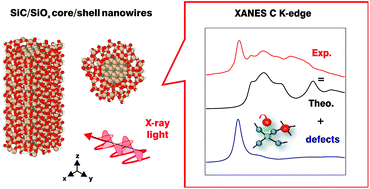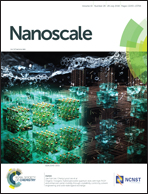A novel combined experimental and multiscale theoretical approach to unravel the structure of SiC/SiOx core/shell nanowires for their optimal design†
Abstract
In this work we propose a realistic model of nanometer-thick SiC/SiOx core/shell nanowires (NWs) using a combined first-principles and experimental approach. SiC/SiOx core/shell NWs were first synthesised by a low-cost carbothermal method and their chemical–physical experimental analysis was accomplished by recording X-ray absorption near-edge spectra. In particular, the K-edge absorption lineshapes of C, O, and Si are used to validate our computational model of the SiC/SiOx core/shell NW architectures, obtained by a multiscale approach, including molecular dynamics, tight-binding and density functional simulations. Moreover, we present ab initio calculations of the electronic structure of hydrogenated SiC and SiC/SiOx core/shell NWs, studying the modification induced by several different substitutional defects and impurities into both the surface and the interfacial region between the SiC core and the SiOx shell. We find that on the one hand the electron quantum confinement results in a broadening of the band gap, while hydroxyl surface terminations decrease it. This computational investigation shows that our model of SiC/SiOx core/shell NWs is capable to deliver an accurate interpretation of the recorded X-ray absorption near-edge spectra and proves to be a valuable tool towards the optimal design and application of these nanosystems in actual devices.



 Please wait while we load your content...
Please wait while we load your content...